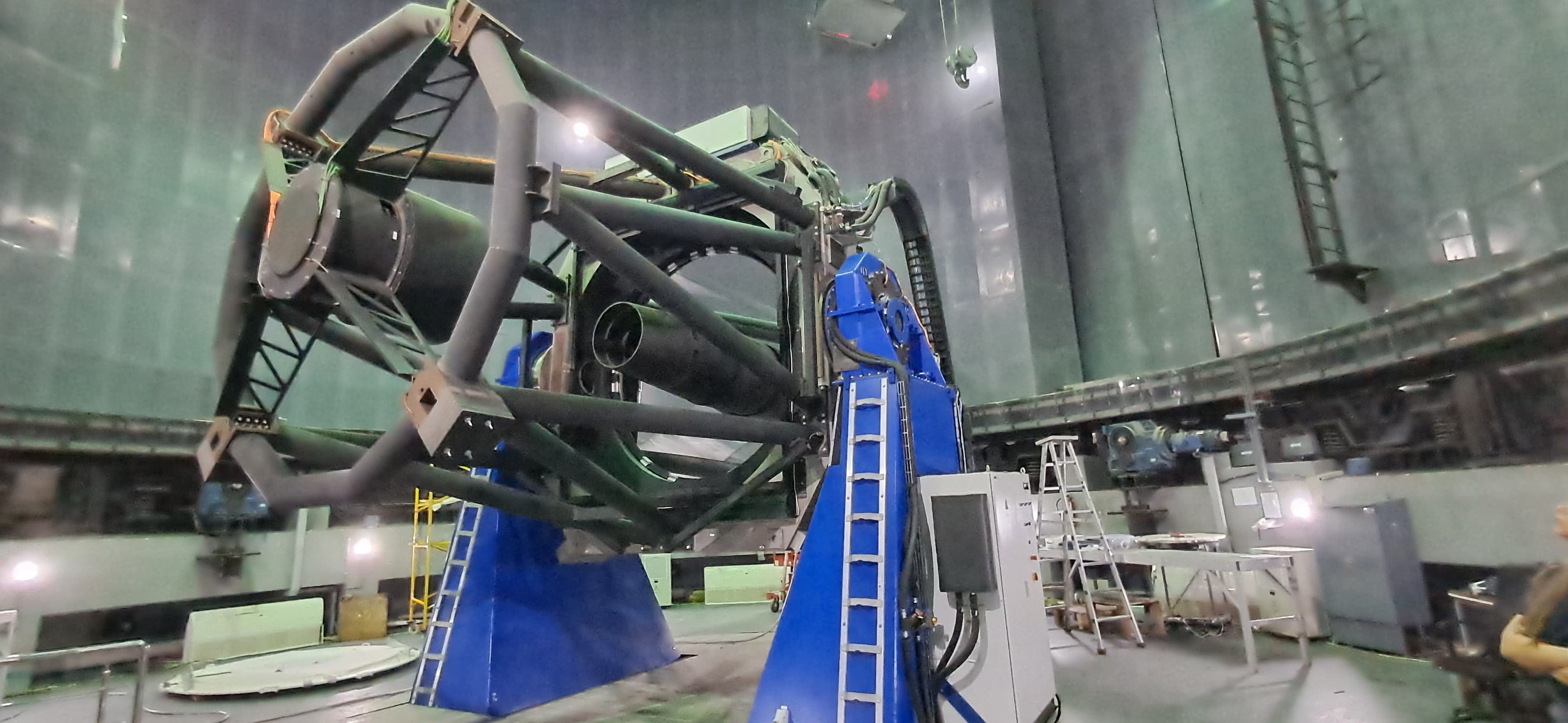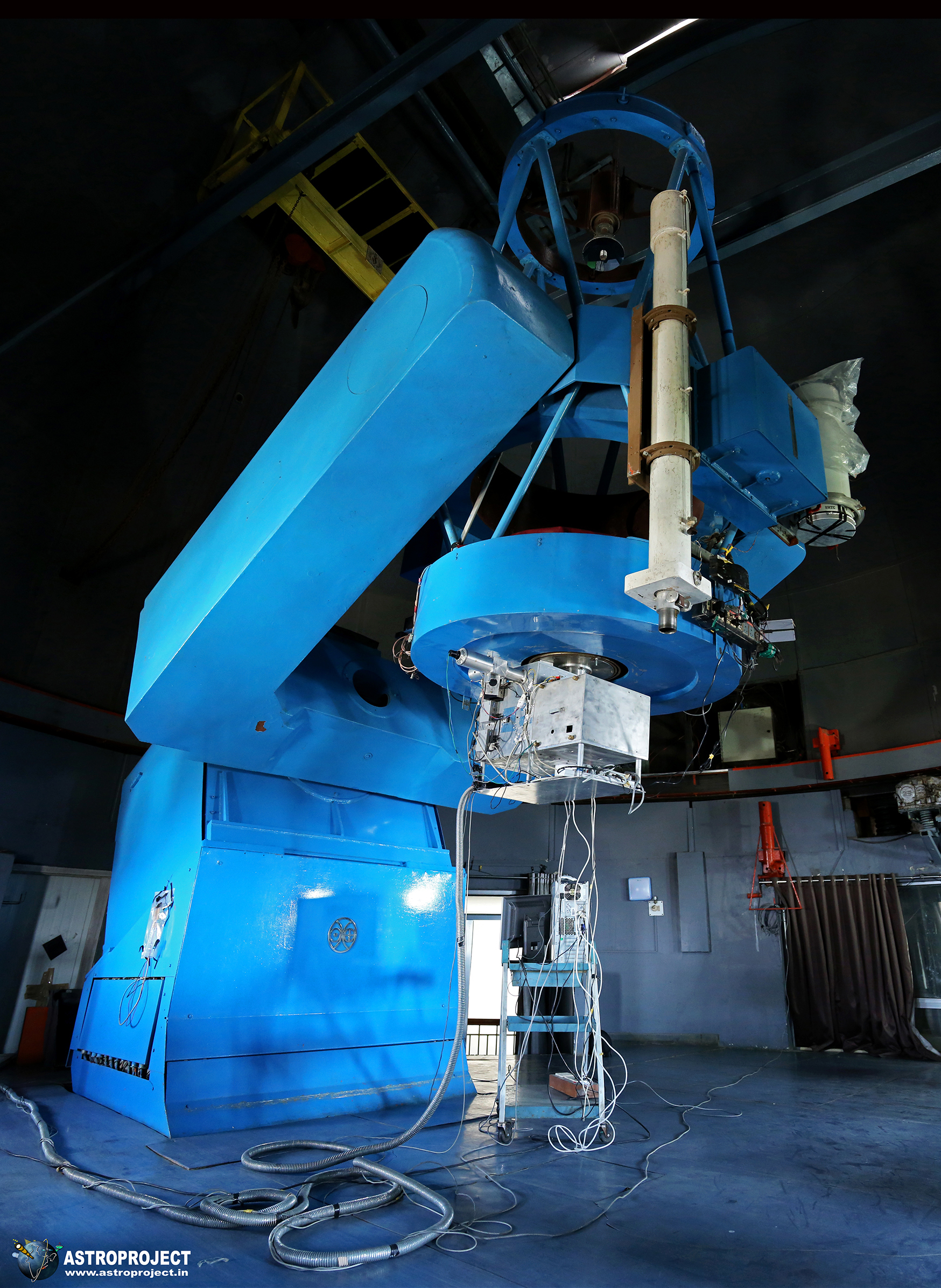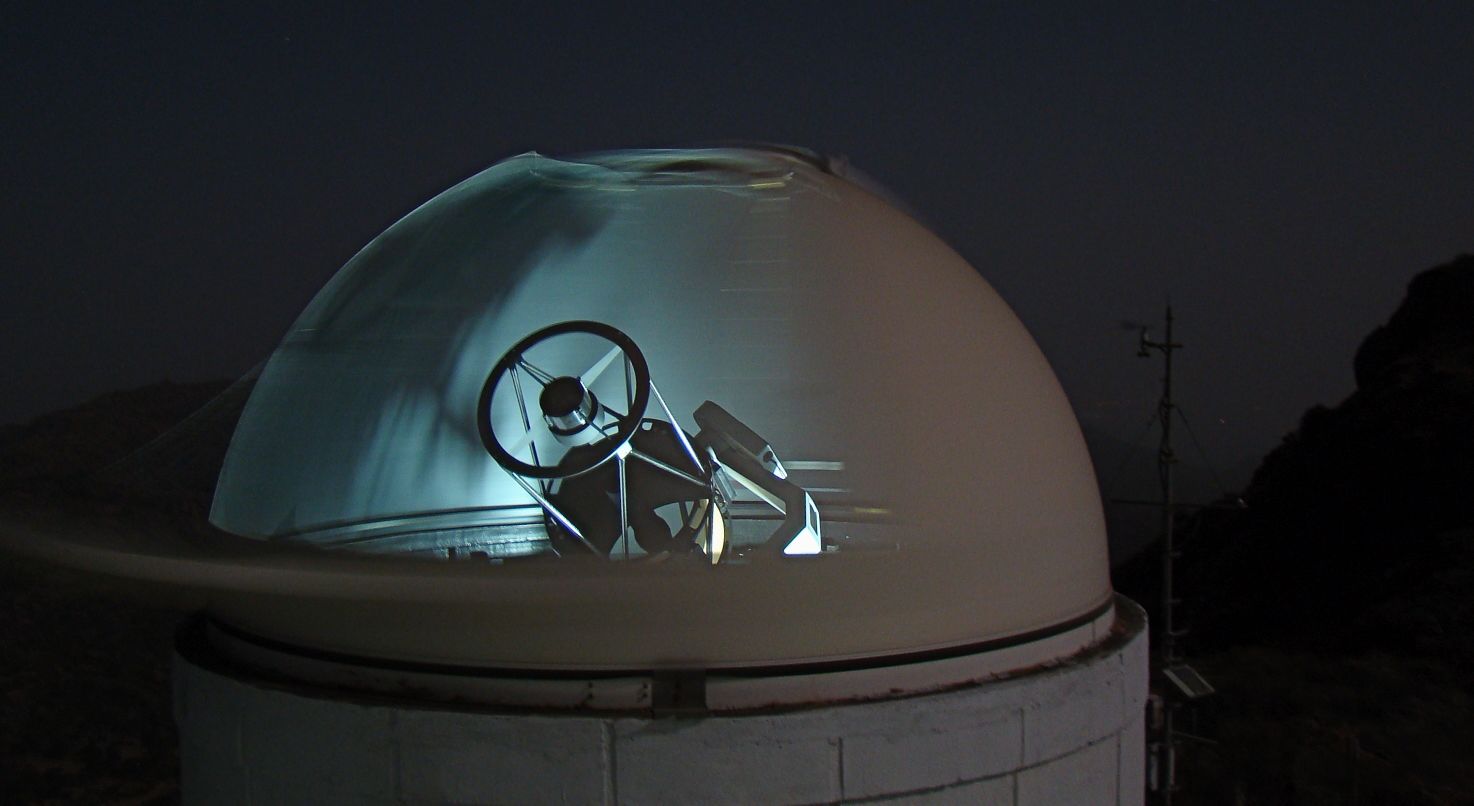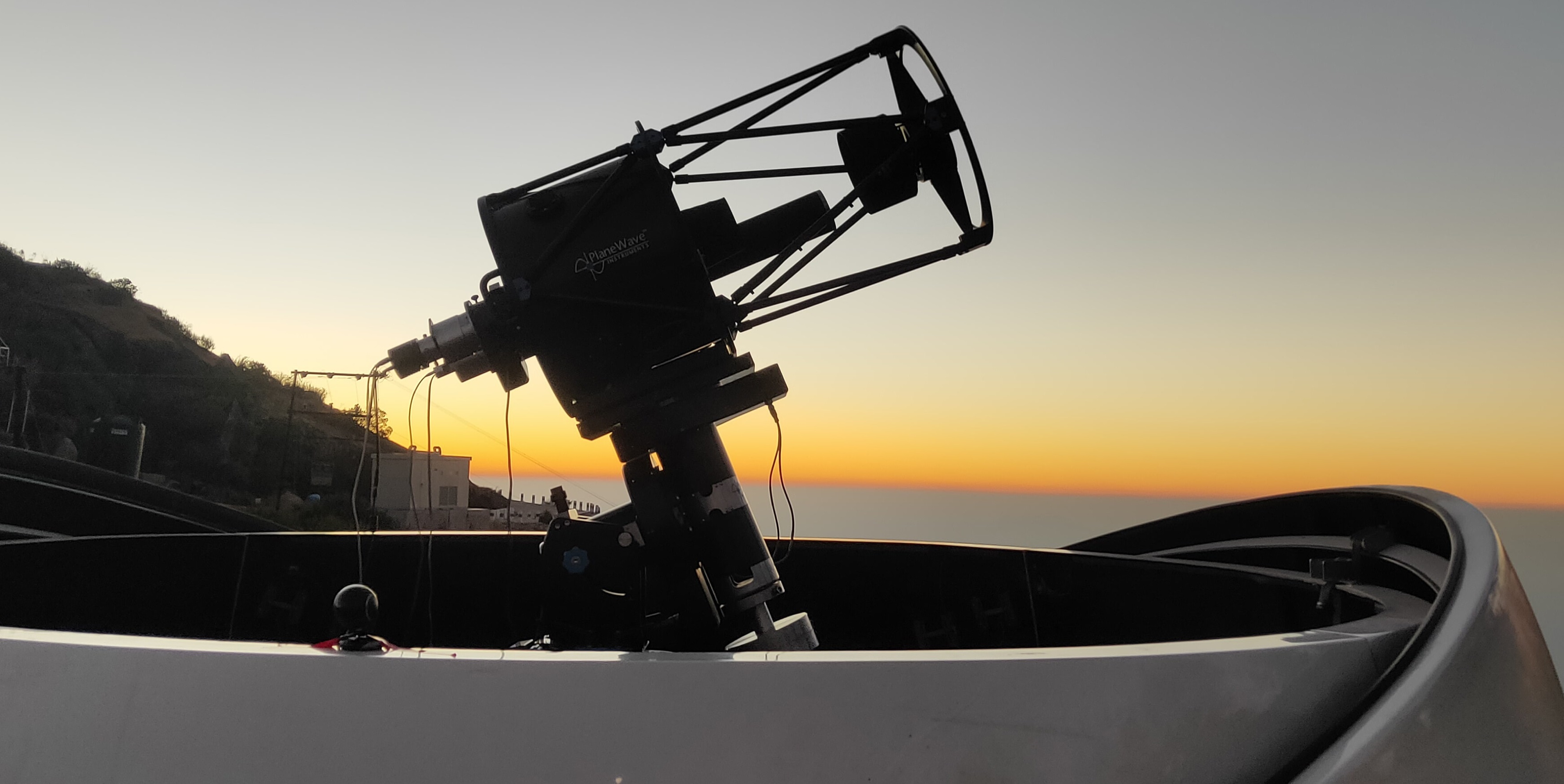2.5m Telescope
The PRL 2.5m telescope project is a state of the art technological development taken up at
Physical Research Laboratory (PRL) in collaboration with Advanced Mechanical and Optical
Systems (AMOS), Belgium. The design of the main tube is a Ritchey-Chretien (RC)
configuration, i.e. a hyperbolic concave primary mirror (M1) and a hyperbolic convex
secondary mirror (M2) sharing a common conical focus. The plate scale of the telescope
equals 10.313 arcsec/mm. The focal plane is 2.1 m behind the vertex of the M1. The
effective focal ratio of the telescope is f/8 with the operational waveband of the telescope
between 370-4000 nm. The size of the primary mirror is 2.5m supported over 42 axial and
18 peripheral actuators. The meniscus primary mirror has the advanced Active Optics
system which corrects for mirror deformations actively during operations. Wavefront sensor
(WFS) is the brain of the active optics system which analyse and command the actuators for
required corrections in primary mirror.
The secondary mirror is mounted over the Hexapod with baffle tree mechanism and has five
degree of freedom (tip, tilt and focus) to correct for the aberrations. The telescope is made
for an unvignetted Field-of-View (FOV) of 25-arcmin diameter at the main port. Two side
ports are designed for FOV of 10 arcmin diameter. There are two separate M3 mirrors to
direct the central light to two side ports respectively. One of the M3 mirror is equipped with
tip-tilt mechanism which will compensate the first order atmospheric seeing conditions and
thus will improve the star image size giving a clearer and crisper images. It has a pointing
accuracy of 2 arcsec RMS absolute and 0.5 arcsec RMS differential. The tracking accuracy of
the telescope is 0.2-0.5 arcsec RMS in close loop with Auto guider unit.
For more details click
here
1.2m Telescope
The 1.2m telescope was designed and built indigenously by the SHAR Center of ISRO. The telescope is on a
fork mounted equatorially. All the original electronics has been replaced by PRL's engineers in recent times
and the current version of the electronics and control/drive system is controlled by a Linux PC. The
software is also developed in house. Apart from normal 'sidereal' tracking, it is also possible to have non
sidereal rate tracking for observing fast moving objects like comets and asteroids.
Telescope is operational since December 1994.
Various back-end Instruments that are available with the telescope at present can be found
here
Automated Telescope for Variability Studies(ATVS
50cm)
"Automated Telescope for Variability Studies" or ATVS is a newly installed observing facility at MIRO
Observatory. This is a CDK20 system provided by Planewave instruments Pvt. Ltd. The Planewave instruments
CDK20 is a 20 inch(0.51 meter) f/6.8 corrected Dall-kirkham Astrograph Telescope. ATVS is completely
automated robotic telescope and hence can be operated remotely from anywhere in PRL network. Apart from the
back end instrument, ATVS system comprises Boltwood cloud sensor, all sky camera, Shutter drive and control
system, and dome drive and control system auxiliary devices coordinating in robotic operation. The driver
for operating the different components of ATVS system are developed in house.
43cm Telescope
This is a CDK17 system provided by Planewave instruments Pvt. Ltd. The Planewave instruments CDK17 is a 17
inch(0.43 meter) f/6.8 corrected Dall-kirkham Astrograph Telescope. Telescope became functional from January
2019.
This telescope has Filters :
Astronomy standard Bassels's BVRI filters.
The Telescope is utilized for exoplanet transit follow-up observations using the choice of the following
sensors given in the table below:
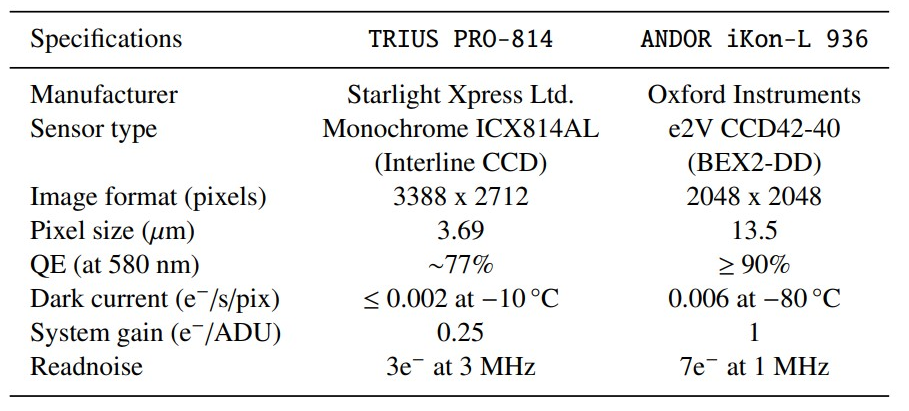
TRIUS PRO-814 (TRI) CCD provides a field of view (FOV) of 14.60 arcminute × 11.70 arcminute with a pixel
scale of 0.26 arcsecond.
ANDOR iKon-L 936 (ADR) CCD provides a field of view (FOV) of 32 arcminute x 32 arcminute with a pixel scale
of 0.95 arcsecond.
Sensitivity: 1-2 millimag in differential photometry using slight defocused images of 4-6 arcsecond
star psf FWHM.
